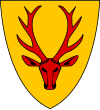
51°54' N 16°41' E, 84.8 miles W of Warszawa. Gmina Osieczna is an urban-rural administrative district in Leszno powiat, Greater Poland Voivodeship,in west-central Poland with its seat is the town of Osieczna, 10 km (6 mi) NE of Leszno and 58 km (36 mi) S of the regional capital Poznań. The gmina 2006 total population was 8,576 out of which the town Osieczna population was 2,018. Beside the town of Osieczna, Gmina Osieczna contains the villages and settlements of Adamowo, Berdychowo, Chmielkowo, Dobramyśl, Drzeczkowo, Frankowo, Górka, Grodzisko, Jeziorki, Kąkolewo, Kąty, Kleszczewo, Kopanina, Łoniewo, Maciejewo, Miąskowo, Nowe Wolkowo, Popowo Wonieskie, Świerczyna, Trzebania, Ustronie, Witosław, Wojnowice, Wolkowo and Ziemnice. Normal 0
The presence of Jews in the town was first documented in 1637 when the first synagogue was built. In 1786 a wooden synagogue was built. In May 1793 the Jews received privileges from the town, allowing them to trade goods of all kinds in the city and outside, be craftsmen, and own homes. At the same time, Jews were required to pay taxes. Jewish population: 1793-114, 1840-248,1858-166, 1871-95 years, 1880-56, and 1895-six. Despite declining numbers, in 1878 a new synagogue building on a hill and the cemetery fence were built. Funds were requested of other Jewish communities. In 1920, only Rosa Fabich and Jedwab Blum remained in the city. Their fate is unknown. [June 2009]
CEMETERY: Established in the 18th century between today's streets: Słoneczną, Gostyńską, Jeziorną, and Podgórną.. During WWII, the Nazis damaged the cemetery. After liberation, the city finished the destruction and built housing and a park. In 1997, local regional authority Norbert Dudziak had 26 matzevot fragments for a lapidarium at Podgórna built in 2005. Most matzevot have inscriptions in Hebrew, some also with German and traditional ornamental motifs: Cohanim hand and lions. On the wall in Polish and Hebrew is a sign. Photos. [June 2009]US Commission No. POCE000313
Alternate name: Storchnest in German. Osieczna is in region Leszczynskie, 51º54N 16º41E, 10 km from Leszno; 70 km from Poznan. The cemetery is located on ul. Stoneczna. Population is 1000-5000 with no Jews.
- Town: Burmistrz Stanislaw Kaczmarck, ul. Kopernika 3B, 64-113 Osieczna; Urzad Miasta w Osiecznej ul. Powstancow Wlkp 6, 64-113 Osieczna, tel. 27-74-19, 350-648.
- Interested: Ewa Piesiewicz, Panstwowa Sluzba Ochrony Zabytkow w Lesznie, ul. Mickiewicza 5, tel.20-63-83.
The earliest known Jewish community existed in 1637. The most noteworthy events were 1793 fire; 1880 dismantling of the synagogue; the last Jews moved out in 1920. R. Dayan Salomo, R. Menashem Nackum, R. Yoel Posner, and R. Bar Jasukulski lived here. The Conservative and Progressive-Reform cemetery was established at the turn of the 17th-18th century. The isolated urban crown of a hill has no sign or marker. Access off a public road is entirely closed. {SIC: "no wall or fence" is checked off on form with hand-written statement "fenced in by the new users".] There is no gate. The cemetery was 0.25 ha before WWII and is now occupied by residential buildings; there is nothing left. A private individual owns residental buildings. Properties adjacent are residential.
Dariusz Czwojdrak completed survey Nov. 13, 1991 and visited and interviewed Stanislaw Kaczmarek 12 Nov. 1991.
17 names from those tombstones collected in the Jewish Department of the Regional Museum in Leszno. Source: Dariusz Czwojdrak forwarded by Scott Clark This email address is being protected from spambots. You need JavaScript enabled to view it.
